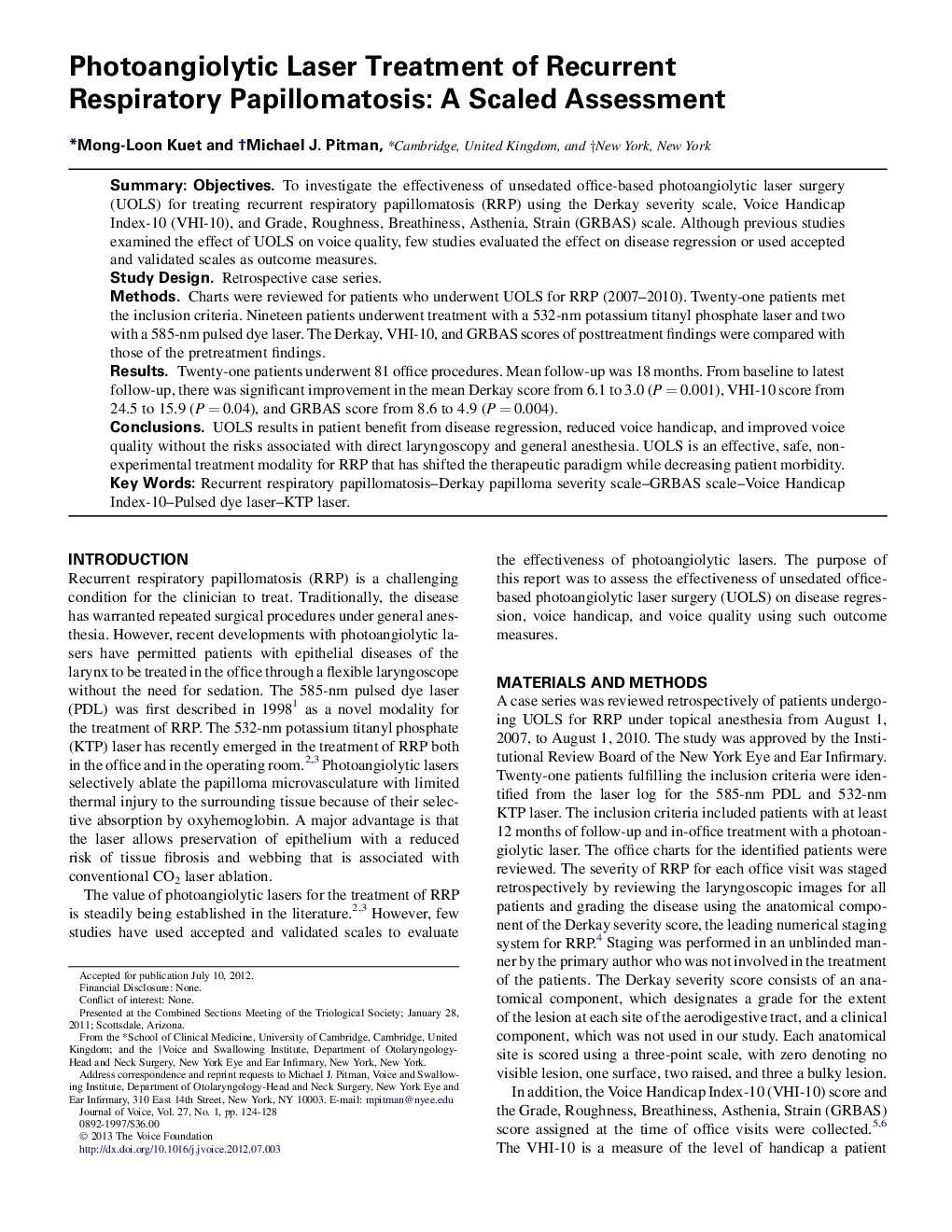| Article ID | Journal | Published Year | Pages | File Type |
|---|---|---|---|---|
| 1101661 | Journal of Voice | 2013 | 5 Pages |
SummaryObjectivesTo investigate the effectiveness of unsedated office-based photoangiolytic laser surgery (UOLS) for treating recurrent respiratory papillomatosis (RRP) using the Derkay severity scale, Voice Handicap Index-10 (VHI-10), and Grade, Roughness, Breathiness, Asthenia, Strain (GRBAS) scale. Although previous studies examined the effect of UOLS on voice quality, few studies evaluated the effect on disease regression or used accepted and validated scales as outcome measures.Study DesignRetrospective case series.MethodsCharts were reviewed for patients who underwent UOLS for RRP (2007–2010). Twenty-one patients met the inclusion criteria. Nineteen patients underwent treatment with a 532-nm potassium titanyl phosphate laser and two with a 585-nm pulsed dye laser. The Derkay, VHI-10, and GRBAS scores of posttreatment findings were compared with those of the pretreatment findings.ResultsTwenty-one patients underwent 81 office procedures. Mean follow-up was 18 months. From baseline to latest follow-up, there was significant improvement in the mean Derkay score from 6.1 to 3.0 (P = 0.001), VHI-10 score from 24.5 to 15.9 (P = 0.04), and GRBAS score from 8.6 to 4.9 (P = 0.004).ConclusionsUOLS results in patient benefit from disease regression, reduced voice handicap, and improved voice quality without the risks associated with direct laryngoscopy and general anesthesia. UOLS is an effective, safe, nonexperimental treatment modality for RRP that has shifted the therapeutic paradigm while decreasing patient morbidity.
